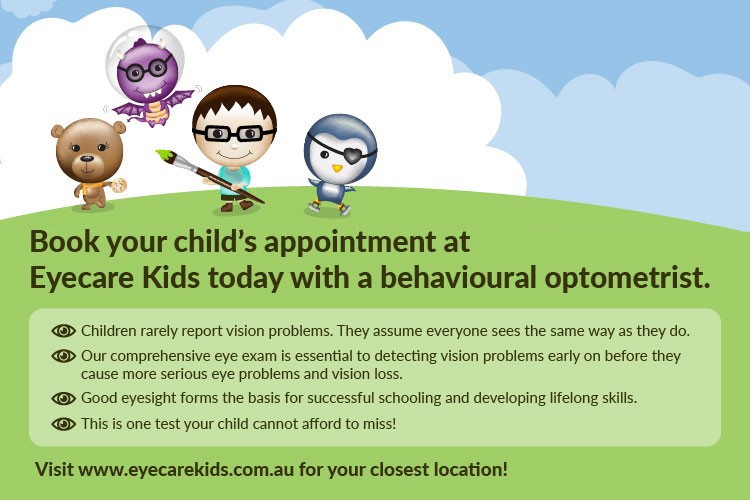Most of a child’s learning happens in the classroom, with about 80% of learning going through the visual system. We see to learn. We read to learn. The words we read create a picture or an idea in our minds and then we are able to understand. Our understanding builds up over time and that is how we progress in our intellectual capability of making sense of the world and the people around us.
One out of five children has a vision problem which may be affecting their ability to concentrate and understand in the classroom. According to the Better Vision Institute, only 14% of children have had a comprehensive eye check by the first grade.
Every child should have a comprehensive eye check before they start school.
- When babies are born to when they are 5 years old, they are ‘learning to see’.
- From kindergarten to Year 2, most children are ‘learning to read’.
- From Year 3 onwards they are ‘reading to learn’.
There are two problems a child can face when reading. Before they can even make sense out of what they read, they need to be able to read the information to begin with. That is, their two eyes are working together, tracking across a page, keeping the words clear without causing any eye strain or blur or losing position on the page. This is the visual functional aspect of reading. The second problem is the visual perception process. This is where the child has to now process and make meaning out of what is being seen through his/her eyes. This affects a child’s understanding of the world around them.
Take a look at some of the common vision problems your child may be having.
Sucess in academic achievement
Everyone needs to develop good visual skills to become efficient learners. Gaps or reduced ability in visual skills can become a poor foundation for building academic achievement. In the early years of education, students require good visual skills to learn to read. Once these skills are integrated, they are then read to read to learn. Tutoring alone is sometimes not enough to keep up at school
- Reading
- Writing
- Maths
Development of Vision Processing Skills
Vision processing is an ability that happens in the brain. It is our ability to interpret, analyse and give meaning to what is seen. Good processing skills make it easier to understand, remember and learn at school
- Visual Discrimination
- Visual Memory
- Visual Sequential Memory
- Visual Spatial Relations
- Visual Spatial Orientation
- Visual Form Constancy
- Visual Closure
- Visual Figure ground
- Visualisation
Development of Ocular Motor Skills
Our eyes have muscles outside the eyeball that help direct sight by communicating with the brain. In order to see something clearly and comfortably, both eyes need to work well as a team. Focus control happens inside the eyeball. This control needs to be accurate to be able to see clearly both near and far.
- Eye teaming (Convergence)
- Eye Focussing (Accommodation)
- Eye Tracking (Saccades & Pursuits)
Development Eye-Hand and Eye-Body Coordination
The eye “sees” and then “tells” the body what to do. Good visual motor integration helps with balance, coordination and movement. Understanding what we see allows us to trust the body movement that follows and help us learn new skills quickly such as learning a new sport or riding a bicycle
- Fine motor
- Spatial awareness
- Directionality
- Midline
- Gross motor
- Body Awareness Image
- Eye/hand, Eye/foot coordination
- Laterality
- Dominance
Development of Healthy Eyes and Clear Sight
Development of all the senses are important (balance, hearing, smell, touch, taste, kinaesthetic) but at Eyecare Kids, our main focus is vision. Particularly as 80% of learning during the child’s early years comes through vision.
- Visual acuity (20/20 sight)
- Myopia, Hyperopia, Astigmatism
- Stereopsis
- Colour Vision
- Developmental defects

